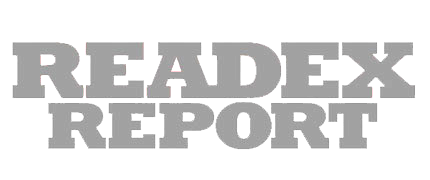Dirty Searching and Roundabout Paths: Using Afro-Americana Imprints, 1535-1922, in a Master's Level Seminar
Would you consider sealing your next envelope with a sticker that read: “Be not partakers in other men’s sins.” More pointedly if you received such a missive, by ripping the seal would you be endorsing or decrying the maxim? I’m not sure, myself. But I was glad to learn about and see the page of gummed Abolitionist labels that my student placed within the discourse of indulgence and sin during the nineteenth century.

In fall 2013 my graduate students explored the online collection Afro-Americana Imprints, 1535-1922: From the Library Company of Philadelphia. They were instructed to construct a historically informed narrative from what they found—a narrative that could demonstrate what possibilities the collection might offer future users: students, scholars, and archival tourists alike. Since I was teaching this Clemson University Master’s level seminar, English 8200, The Slave Narrative in English, I directed students to primarily read texts as representations of a cultural and literary imagination. Nonetheless, I also instructed them to relentlessly frame questions of storytelling with rich contextual shaping of cultural truths, historical events, and material culture studies. While we focused mainly upon reading history and theory of the narrative tradition, as well as on contemporary iterations within important Neo Slave novels, the class was designed to explore the language and culture of racial power and social change more generally for the 19th century.
The mid-semester assignment involving Afro-Americana Imprints was designed to get their feet wet in genuine archival work—work that might bring hitherto unknown stories to the fore. While we were relatively isolated in the upstate of South Carolina, at an institution without a doctoral program in the traditional humanities and, significantly, many hours away from most major research collections or scholarly centers such as the august Library Company of Philadelphia, the Readex digital edition offered my students an opportunity to do what I call dirty research. Moreover, I hoped this project would allow them to write in a slightly more public vein with an eye to greater accessibility and engagement than graduate student writing usually allows.

So what is “dirty research?” they asked when I flippantly threw out the term. Well, what I meant was that getting deep into an archive with a specific agenda, and then throwing the agenda away to read with simultaneous breadth and depth, is a formative intellectual experience. There’s nothing glamorous about just pounding through page after page of images and text but when you stumble across a question that makes you pause and redirects you, you know that crossroads itself is a discovery. When reading a text eventually turns into listening to a text, you know that your dirty searching has paid off. Dirty searching is different from browsing. The dirty search requires a more ferocious push, although every document may scuttle your path. The dirty search shows you a story that seems obvious only after you arrive at it via a roundabout path.
My students listened to this prattle with more bemusement than inspiration, but, with tolerant sighs, they packed their satchels and promised to report what preliminary archival objects had caught their eye and why.
A bevy of unanticipated reports came back. Students examined bird images in song lyrics, rhetorical strategies in sermons, and the structure of racially inflected horror in criminal broadsides. Other students looked at poetry that both praised and condemned John C. Calhoun, the U.S. vice president and South Carolina politician. Others traced the problematic visual rhetoric of several photographs.
In this special issue of The Readex Report, the three student assignments I have chosen to share with you are demonstrative of the breadth of their inquiries.
One student with a serious eye towards a teaching career constructed a lesson plan. How might an instructor weave together discussions of minstrelsy and its legacy by launching a sensitive discussion of a sketch from a minstrel show? What are some ways these texts within Afro-Americana Imprints might translate to a nuanced and yet efficient classroom discussion? To read Dismantling the Minstrel: A Pedagogical Approach by Justin Holliday, please click here.
Another student located within a broader cultural discourse about self-regulation and temperance what might be understood as a novelty item: abolitionist wafers designed to seal envelopes and remind people what was at stake in the abolitionist cause. To read “Be Not Partaker in the Sin”: The Language of Abstinence in 19th-Century Abolition and Temperance Texts by Chelsea Clarey, please click here.
Another student looked at the confessions of John Cook, a co-conspirator with John Brown, to see how Cook’s confession might contrast with the confessions of Nat Turner. To read Confessing to Nothing: The Agency of Confession in Nat Turner and John E. Cook by Josh Martin, please click here.
Afro-Americana Imprints undoubtedly empowered my students to feel they could direct their own research. While their modest explorations varied tremendously in tone and emphasis, they all approached the material with both humility and aggression. This curious mixture of agendas and openness allowed them to hear and share the texts they encountered in genuinely thoughtful ways.




